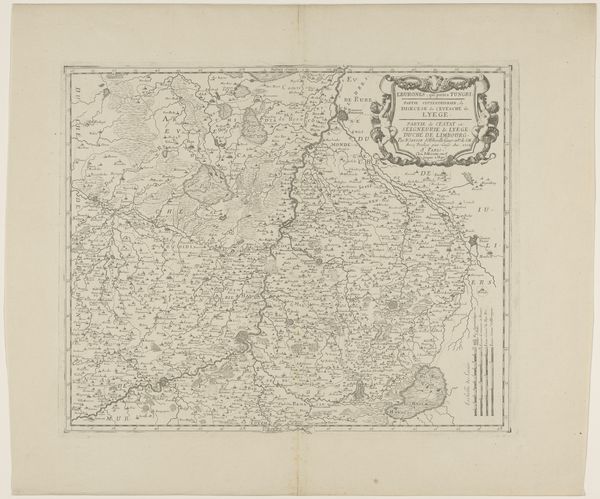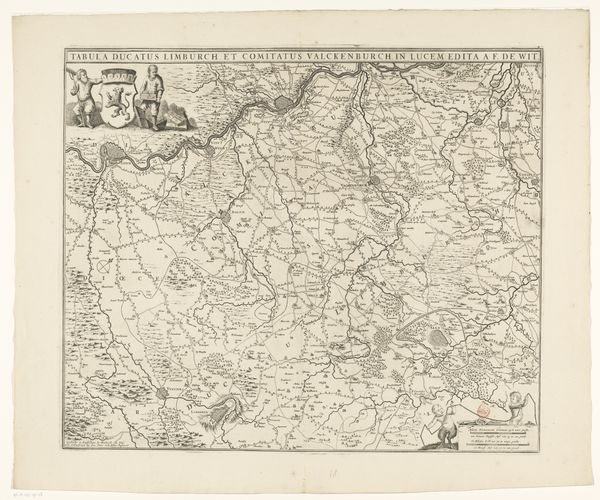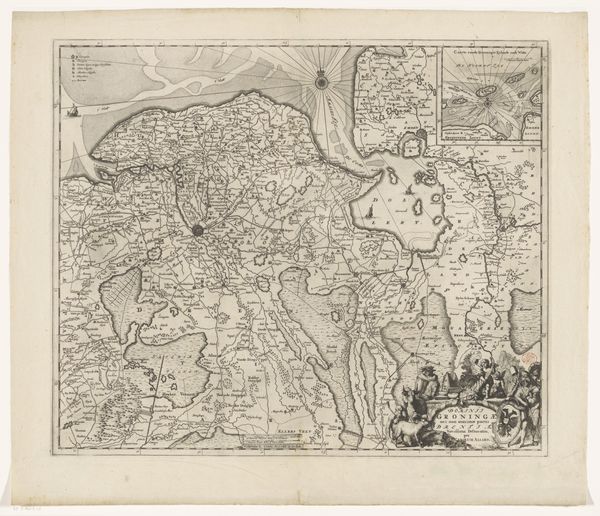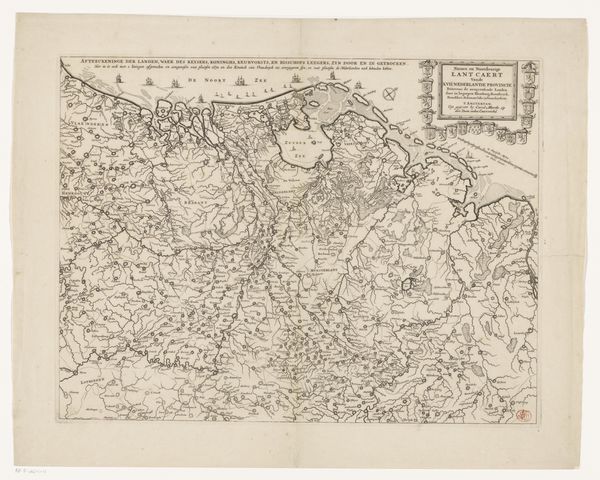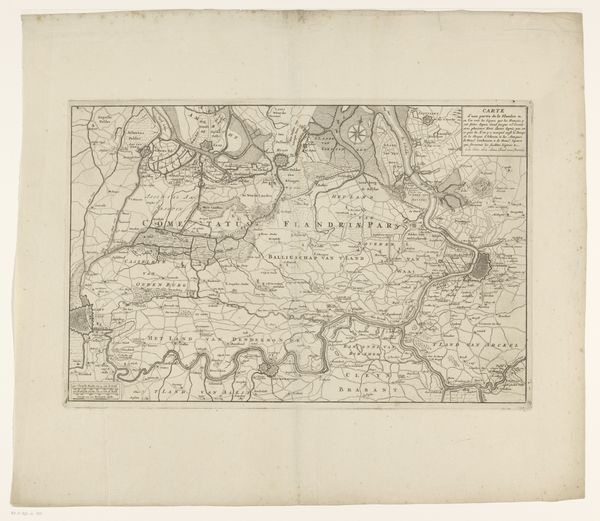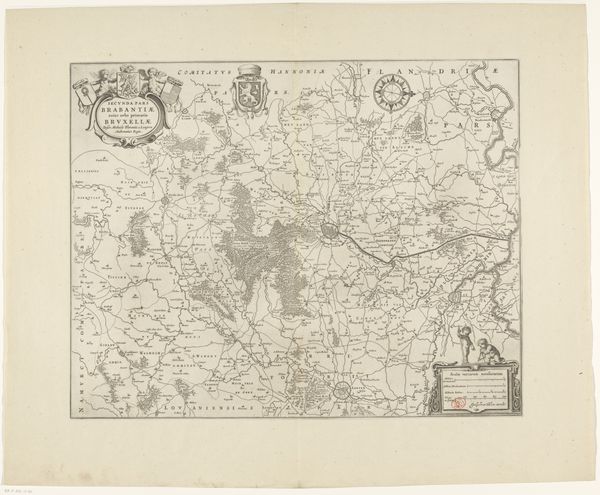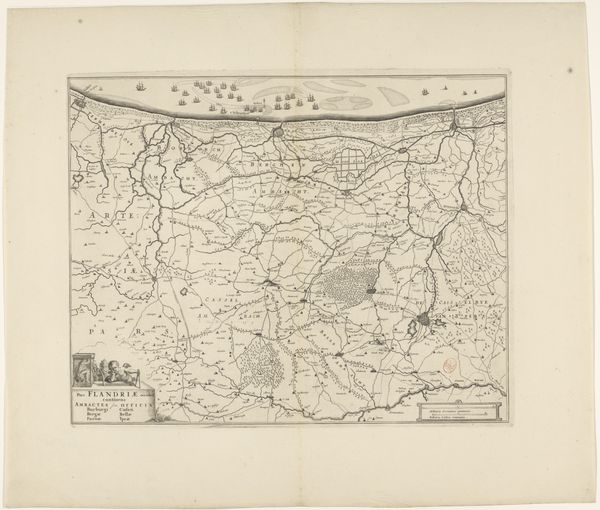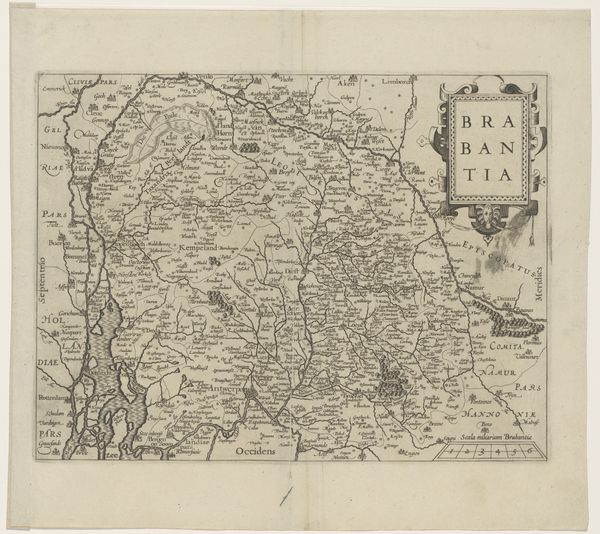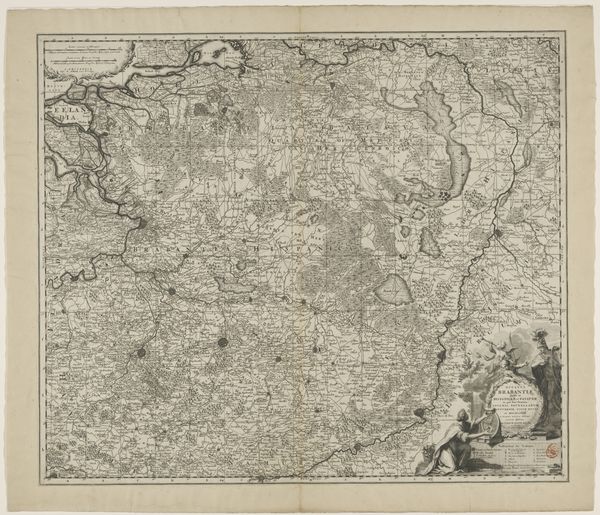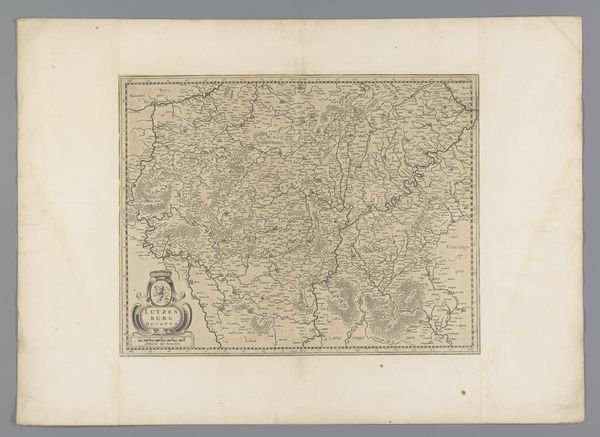
print, engraving
#
dutch-golden-age
# print
#
pen sketch
#
old engraving style
#
pen work
#
engraving
Dimensions: height 415 mm, width 522 mm
Copyright: Rijks Museum: Open Domain
Curator: We’re looking at “Kaart van Eigenlijk en Rijks-Vlaanderen,” a fascinating engraved map from between 1641 and 1683, part of the Rijksmuseum’s collection. Editor: Immediately, I’m struck by its intricacy. The level of detail is astounding. It feels almost like peering through a very precise lens into the past, but it is also overtly presenting power and authority. Curator: Absolutely. This map wasn’t just about geographical accuracy; it was a statement of political power. Look closely at the ornate cartouche. Mapping was a tool used by states to define territory, solidify control, and project influence. Editor: Right, maps were never neutral. They actively shaped how people perceived territory. Who was commissioning maps like this? Whose interests did it serve to delineate these specific borders of Flanders? Curator: That’s a crucial question. Powerful merchants or ruling families often commissioned them. They’d use them to visualize their domains or trade networks. Think about the economic implications; these maps could inform trade routes, resource extraction, and strategic military positioning. Editor: It makes you wonder, doesn’t it, how many lives were shaped—perhaps even determined—by these lines drawn on parchment? Who was excluded or rendered invisible in this depiction of the region? Curator: And consider the engraver, meticulously rendering this image. He’s part of a larger artistic ecosystem supported by patronage and driven by specific social and economic conditions characteristic of the Dutch Golden Age. Editor: This really forces us to confront the ways knowledge is always constructed and how “objective” representations can be loaded with subjectivity, designed to emphasize ownership, authority, or to legitimize colonization. It prompts a critical examination of our own biases when viewing historical documents like this. Curator: Precisely. By understanding its historical context and the power dynamics involved, we can unpack its embedded ideologies. Editor: Ultimately, it invites us to question what such representations accomplish and, crucially, whose stories they silence.
Comments
No comments
Be the first to comment and join the conversation on the ultimate creative platform.
